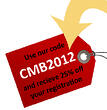 Over the past 3 years, there has been no shortage of attempts to forecast the impact of the Affordable Care Act (ACA) on patients and insurers, but the truth is, the changing care model has ramifications that extend well beyond the waiting room. The multi-billion dollar medical device industry is smack-dab in the middle of tremendous regulatory and economic changes—including the ACA and the Medical Device Excise Tax (MDET). Earlier this year CMB’s MedTech team partnered with the Massachusetts Medical Device Industry Council (MassMEDIC) to survey 123 of their members for their perspectives on the past, present, and future expectations for innovation and growth in the medical device industry. Below, are a few highlights from The 2013 MedTech Industry and Innovation Study:
Over the past 3 years, there has been no shortage of attempts to forecast the impact of the Affordable Care Act (ACA) on patients and insurers, but the truth is, the changing care model has ramifications that extend well beyond the waiting room. The multi-billion dollar medical device industry is smack-dab in the middle of tremendous regulatory and economic changes—including the ACA and the Medical Device Excise Tax (MDET). Earlier this year CMB’s MedTech team partnered with the Massachusetts Medical Device Industry Council (MassMEDIC) to survey 123 of their members for their perspectives on the past, present, and future expectations for innovation and growth in the medical device industry. Below, are a few highlights from The 2013 MedTech Industry and Innovation Study:
-
One of the most profound shifts, reflected in the results of our study, is the emerging influence of economic buyers on medical device innovation. The traditional med device market model places physicians at the center of innovation efforts, and to be sure they’re still very much at the forefront of med device companies’ minds. But as the ACA’s cost containment policies come into effect, hospital administrators and insurers will see their influence grow, as they become increasingly involved in purchasing decisions. Indeed, while just under one third of respondents said they have focused their innovation efforts on economic buyers in the past, 53% said economic buyers would receive their attention in the future.
-
Not surprisingly, the MDET has elicited a great deal of conversation, with med device companies’ still strenuously objecting to the tax that came into effect last year. However, while the industry as a whole has actively advocated for MDET’s repeal, a surprising 40% have yet to plan to address the tax. For those who have made or acted upon plans to address the tax, workforce reductions and reductions in R&D spend top the list of mitigating actions. Despite considerable concerns over the changing care model, many respondents were optimistic for the future, with the bulk of respondents expecting increased revenue, both inside and outside the US in the coming 5 years.
-
Asked to evaluate their performance on key success factors, the vast majority indicated that their company currently meets or exceeds expectations when it comes to identifying customer wants and needs and determining the most compelling features set—table stakes in new product development in any industry. Respondents also identified areas for differentiation (i.e., capabilities that are important for future success, but that most don’t perform well on). Organizations that with the following core skills will win in the future - prioritizing resources, determining how to price product(s)/service(s) given the dramatic changes, and developing compelling clinical data to support their product(s)/service(s).
Click here to read the full report.
The results of this study were presented at MassMEDIC's 17th Annual Conference on May 8th 2013.
Andrew runs CMB’s MedTech practice and has spent the better part of the past decade helping some of the most successful MedTech companies make difficult strategic decisions. In his free time, Andrew enjoys scrubbing into tracheotomies with clients, and running with his dog Moby.




 context of the Affordable Care Act and the evolving nature of today’s care model, patients are going to become increasingly important. MedTech companies will need healthcare consumer insight programs to uncover the wants and needs of their patients and discover the addressable white space. Their intimate understanding of their patients is enabling them to pull ahead and gain a decided competitive advantage.The winners aren’t going to be those who bring solutions to market first but instead those who can translate deep insight of patients into game changing products and services.
context of the Affordable Care Act and the evolving nature of today’s care model, patients are going to become increasingly important. MedTech companies will need healthcare consumer insight programs to uncover the wants and needs of their patients and discover the addressable white space. Their intimate understanding of their patients is enabling them to pull ahead and gain a decided competitive advantage.The winners aren’t going to be those who bring solutions to market first but instead those who can translate deep insight of patients into game changing products and services.  This summer, a
This summer, a 